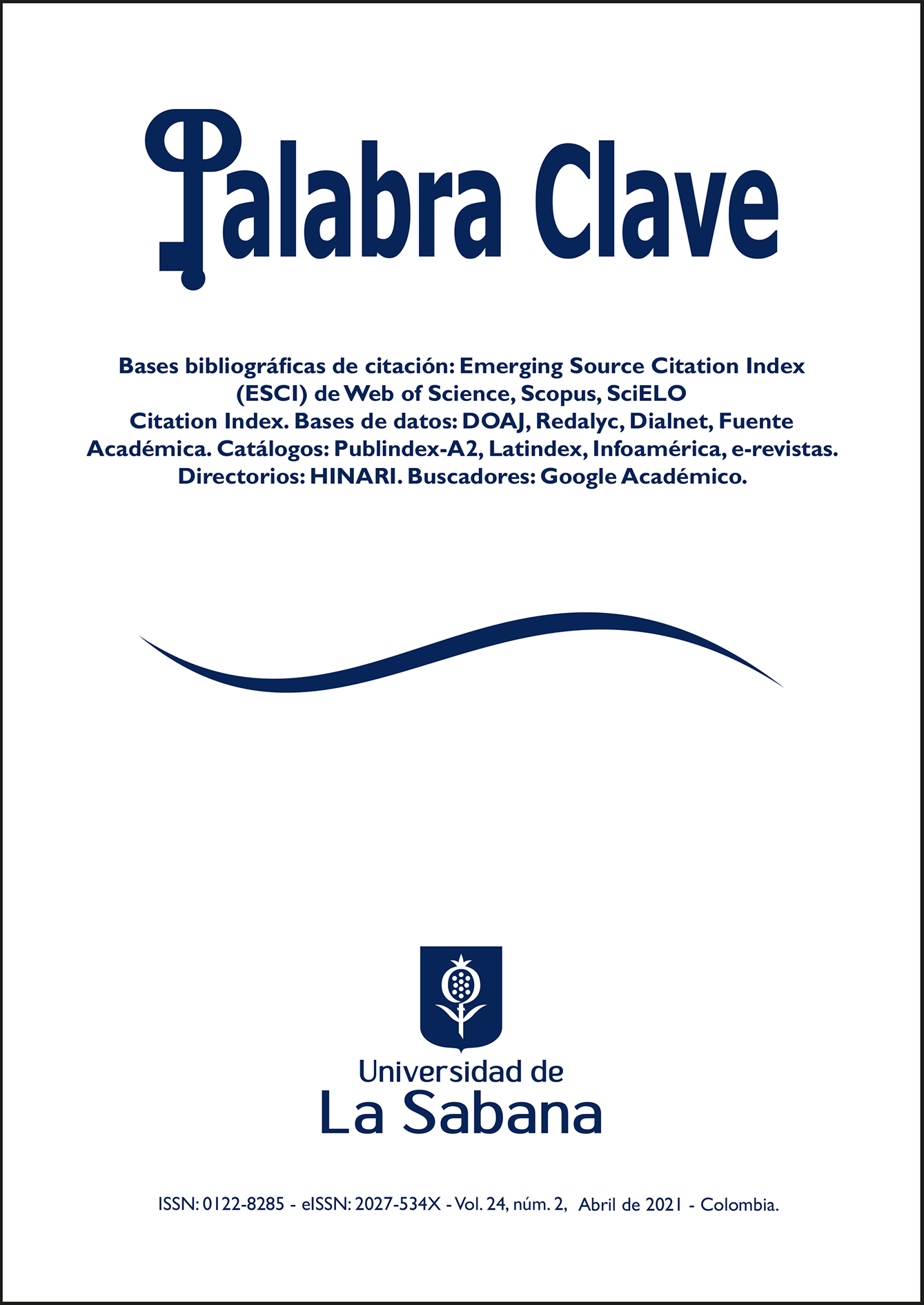Escritura de guiones: entre el arte y la artesanía
DOI:
https://doi.org/10.5294/pacla.2021.24.2.5Palabras clave:
Enseñanza, libertad de expresión, reglas, enseñanza académica, enseñanza académica de arte, narrativa, realizador cinematográfico, cineasta, director de cine, estudios de cineResumen
En el presente artículo, se analiza la enseñanza de la escritura de guiones y de la narración en términos de arte y de artesanía. Se sostiene que desde que, en el siglo XIX, el Romanticismo se estableció como la visión occidental dominante del arte y la cultura, se ha abierto una brecha entre las nociones que tienen las personas sobre el arte y la artesanía, con lo cual se promueve el primero y se degrada la segunda. Esta brecha ha obstaculizado la enseñanza de la escritura de guiones y de la narración en general. En consecuencia, los historiadores del arte y los sociólogos del arte han sugerido desarrollar un “tercer sistema de arte”, uno que reintegre al artista y al artesano y a los valores basados en el arte y la artesanía. Para este fin, se desarrollan los principios básicos de un “enfoque técnico” para la enseñanza de la escritura de guiones, el cual se encuentra en un punto medio entre un enfoque “espontáneo” con sesgos románticos y un enfoque mecanicista “basado en reglas”. Por último, se argumenta que un enfoque técnico de la escritura de guiones o de la narración podría ayudar a materializar ese “tercer sistema de arte” y a beneficiar la práctica, la enseñanza y el estudio de la escritura de guiones y de la narración.
Descargas
Citas
Abrams, M. H. (1989). Doing Things with Texts: Essays in Criticism and Critical Theory. W.W. Norton & Company.
Becker, H. S. (1982). Art Worlds. University of California Press.
Becker, H. S. (2008). Art Worlds. 25th Anniversary Edition. Updated and Expanded. University of California Press. https://doi.org/10.1525/9780520934870-005
Bourdieu, P. (1998). Les règles de l’art. Genèse et structure du champ littéraire. Éditions du Seuil.
Cattrysse, P. (2016). Cultural dimensions and an intercultural study of narratorial behavior. The Journal of Internationalization and Localization, 3(2), 113–132. https://doi.org/10.1075/jial.3.2.01cat
Cattrysse, P. (2017). Cultural Dimensions and a Cultural Study of Screenwriting. In Transcultural Screenwriting. Telling Stories for a Global World (pp. 8–27). Cambridge Scholars Publishing.
Cattrysse, P. (2020). Translation and Adaptation Studies: More Interdisciplinary Reflections. TTR: Traduction, Terminologie, Rédaction. https://doi.org/10.7202/1071147ar
Clowney, D. (2008). A Third System of the Arts? An Exploration of Some Ideas from Larry Shiner’s The Invention of Art: A Cultural History. Contemporary Aesthetics, 2(6).
Conradie, W., Frittella, S., Palmigiano, A., Piazzai, M., Tzimoulis, A., & Wijnberg, N. M. (2017). Toward an Epistemic-Logical Theory of Categorization. EPTCS, 251, 167–186. https://doi.org/10.4204/EPTCS.251.12
Goldstone, R. L., Kersten, A., & Carvalho, P. R. (2018). Categorization and Concepts. In Stevens’ Handbook of Experimental Psychology and Cognitive Neuroscience: Vol. Three (pp. 275–317). Wiley. https://doi.org/10.1002/9781119170174.epcn308
Kristeller, P. O. (1951). The Modern System of the Arts: A Study in the History of Aesthetics Part I. Journal of the History of Ideas, 12(4), 496–527. https://doi.org/10.2307/2707484
Lotman, Y. M. (1977). The Structure of the Artistic Text. Translated from the Russian by Gail Lenhoff and Ronald Vroon. University of Michigan, Department of Slavic Languages and Literatures.
Lubart, T. I. (Ed.). (2018). The Creative Process. Perspectives from Multiple Domains. Palgrave Macmillan. https://doi.org/10.1057/978-1-137-50563-7
Mattick, P. (2003). Art in its Time. Theories and Practices of Modern Aesthetics. Routledge Taylor & Francis Group. https://doi.org/10.4324/9780203417836
Minda, J. P. (2015). The Psychology of Thinking. Reasoning, Decision-Making & Problem-Solving. Sage. https://doi.org/10.4135/9781473920262
Moulin, R. (1978). La Genèse de la rareté artistique. Revue d’ethnologie Française, 8, 241–258.
Nisbett, R. E. (2005). The Geography of Thought. How Asians and Westerners Think Differently and Why. Nicholas Brealey Publishing.
Rivera, D. (1932). The revolutionary spirit in modern art. The Modern Quarterly (Baltimore), 6(3), 51–57.
Runco, M. A., & Jaeger, G. J. (2012). The Standard Definition of Creativity. Creativity Research Journal, 24(1), 92–96. https://doi.org/10.1080/10400419.2012.650092
Sawyer, K. (2006). Explaining Creativity: The Science of Human Innovation. Oxford University Press.
Shepard, R. N. (1987). Toward a universal law of generalization for psychological science. Science, 237, 1317–1323. https://doi.org/10.1126/science.3629243
Shiner, L. (2001). The Invention of Art. A Cultural History. University of Chicago Press.
Walia, C. (2019). A Dynamic Definition of Creativity. Creativity Research Journal, 1–11. https://doi.org/10.1080/10400419.2019.1641787
Weiner, R. P. (2000). Creativity & beyond. Cultures, Values, and Change. State University of New York Press.
Descargas
Publicado
Cómo citar
Número
Sección
Licencia
Derechos de autor 2021 Palabra Clave

Esta obra está bajo una licencia internacional Creative Commons Atribución-CompartirIgual 4.0.
Esta revista y sus artículos se publican bajo la licencia CreativeCommons CC BY 4.0 DEED Atribución 4.0 Internacional, usted es libre de: Compartir — copiar y redistribuir el material en cualquier medio o formato para cualquier propósito, incluso comercialmente. Adaptar — remezclar, transformar y construir a partir del material para cualquier propósito, incluso comercialmente. La licencia no puede revocar estas libertades en tanto usted siga los términos de la licencia.









